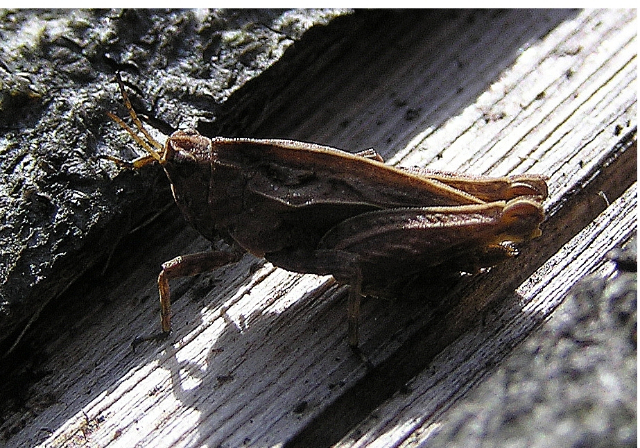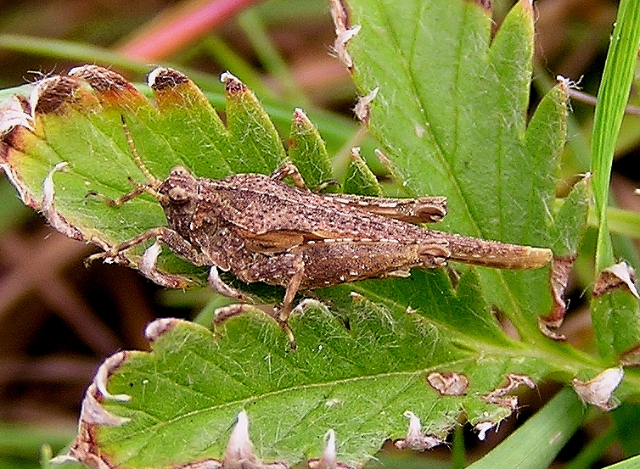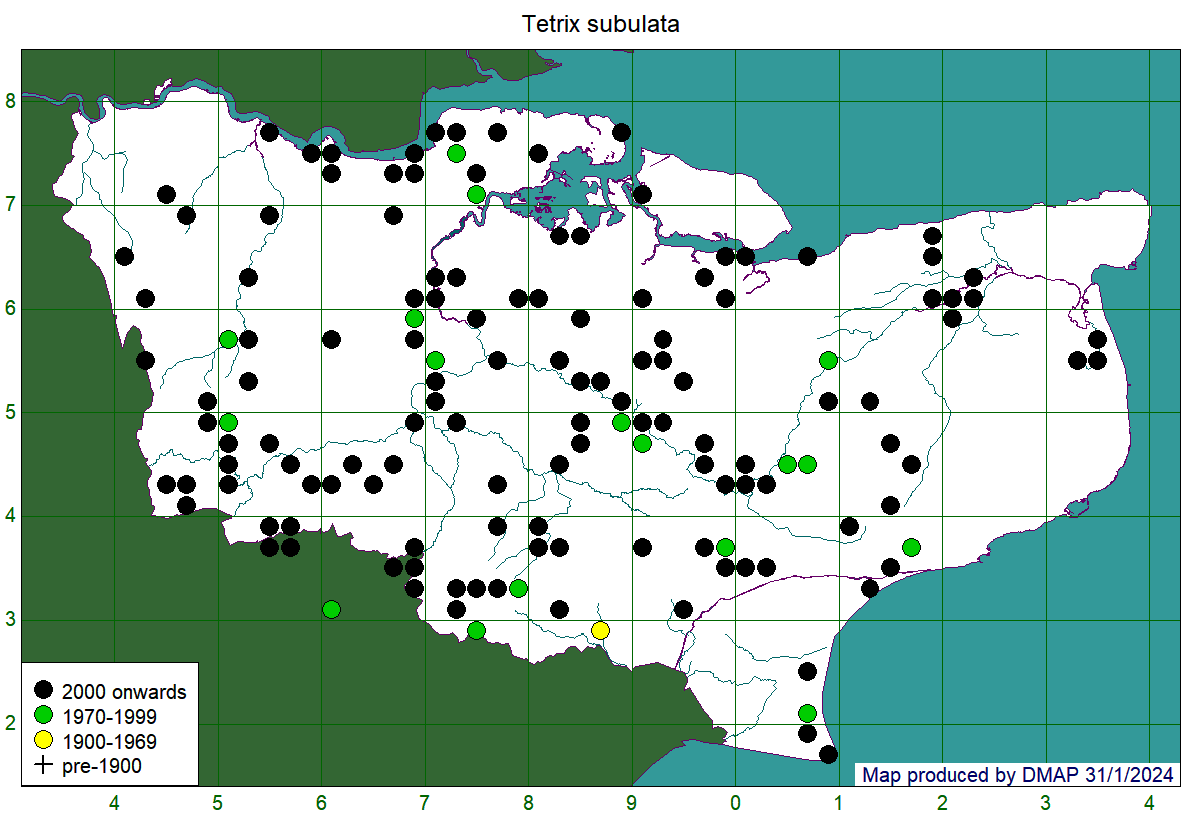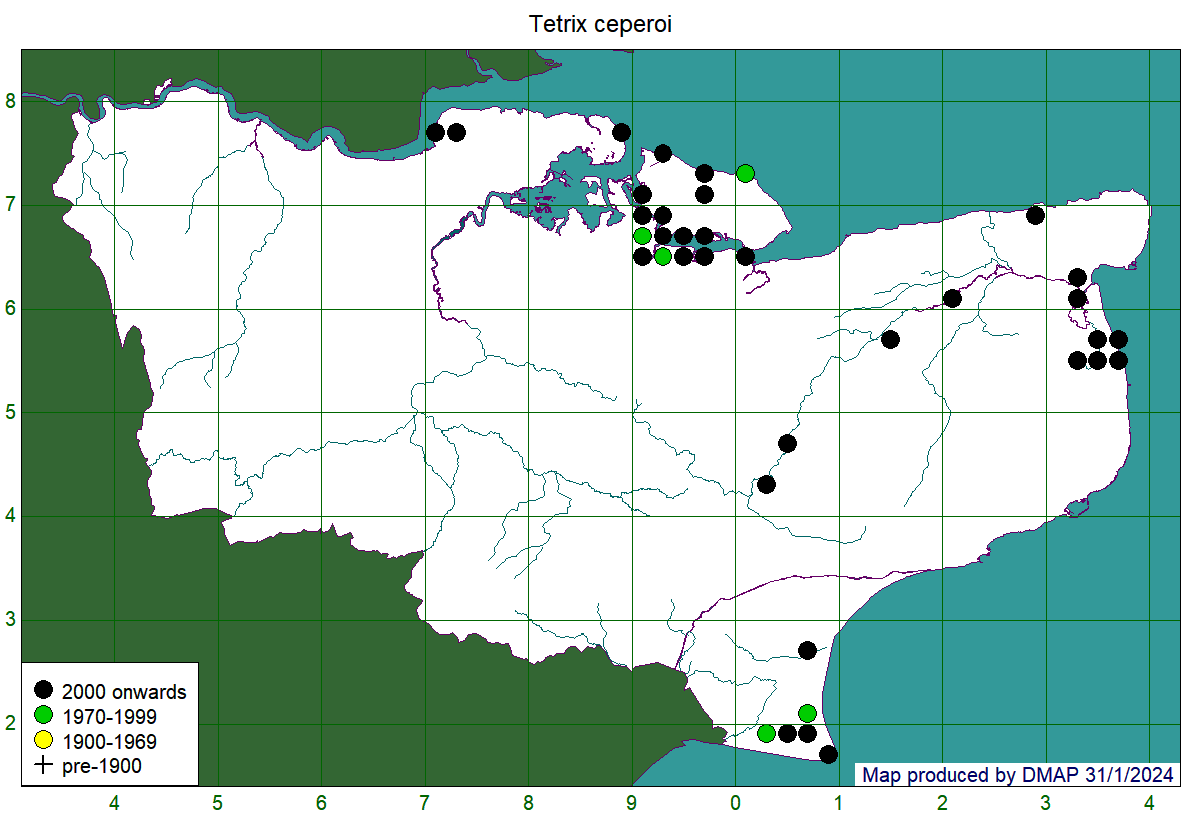Ground-hoppers are small species associated with sparse or open vegetation, where they feed on moss and algae. Adults can be found in both spring and autumn – indeed, Common Ground-hoppers can be found as nymphs or adults at any time of year. They are inconspicuous and are best found by searching by eye or by sweeping open vegetation in suitable habitats.
Common Groundhopper Tetrix undulata

Common Groundhopper. Photo R I Moyse.
Common Ground-hopper is the most commonly encountered of the three species, and is recognisable by the strong keel on the pronotum and the generally stocky appearance. It occurs in a wide range of habitats that are damp enough to support its food-plants, including grassland, heathland and woodland rides, and is able to utilise drier places than the other two species. It is likely that the large proportion of green dots on the map below reflects under-recording rather than any substantial change in distribution.
Map showing records at tetrad (2km x 2km square) resolution. Colour of dot shows date-class of most recent record for that tetrad.
Slender Groundhopper Tetrix subulata
The Slender Groundhopper is widespread in Kent, but is more closely associated with wet places than the Common Groundhopper, including open species in damp woodlands. It is very similar in appearance to Cepero's Groundhopper, having a long pronotum that extends well beyond the end of the abdomen.
Map showing records at tetrad (2km x 2km square) resolution. Colour of dot shows date-class of most recent record for that tetrad.
Cepero's Groundhopper Tetrix ceperoi

Cepero's Groundhopper. Photo R I Moyse.
Like the Slender Groundhopper, Cepero's Groundhopper is associated with damp habitats, but generally in coastal habitats, including grazing marsh where it may be found on the margins of ditches and ponds. It is considered as Nationally Scarce, and the NBN website shows records from around the coast of Southern England and South Wales, with the most northern records being from the fens. In appearance, it is very similar to Slender Groundhopper, requiring close examination of features of the head and legs for confident identification. It is a strong swimmer if it finds itself in water.
Map showing records at tetrad (2km x 2km square) resolution. Colour of dot shows date-class of most recent record for that tetrad.



